Creating a Safe Color Reaction Between Urine and Water
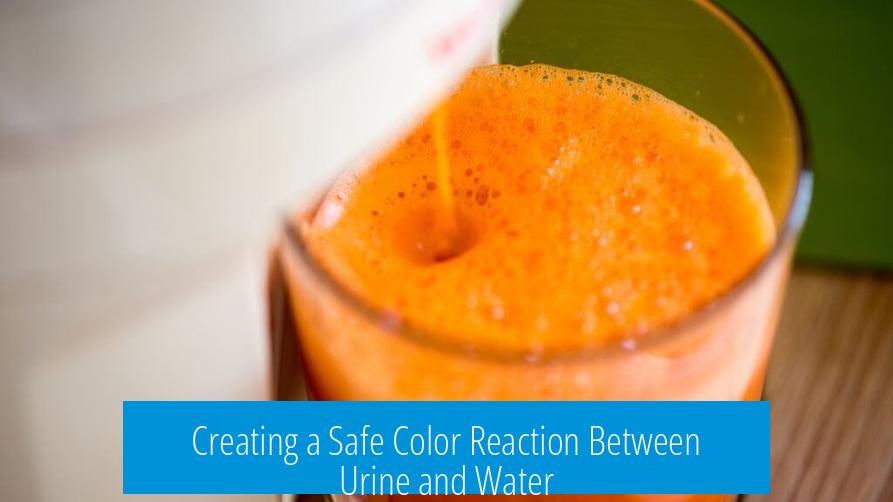
A safe chemical reaction between urine and water that reliably produces a color effect remains impractical due to urine’s variable chemistry and safety concerns. Instead, using thermochromic dyes that change color with temperature offers a safer, more predictable visual effect when warm urine contacts cooler water.
Understanding the Chemistry of Urine
Human urine is a complex biological fluid, primarily composed of water, urea, salts, and various organic and inorganic compounds. Its chemical properties can fluctuate considerably based on diet, health, hydration, and other physiological factors. One key feature relevant for chemical reactions is its pH, which typically ranges near neutral but can vary from slightly acidic (~pH 5) to slightly basic (~pH 8).
This variability in urine pH complicates the use of pH-dependent dyes or indicators for producing a consistent color change when mixed with water. For instance, urinary pH may shift due to dietary intake (e.g., high-protein diets lower pH, vegetarian diets may raise pH). As a result, a color indicator sensitive to a narrow pH range would yield unpredictable results when exposed to different urine samples.
Using pH Indicators: Challenges and Limitations
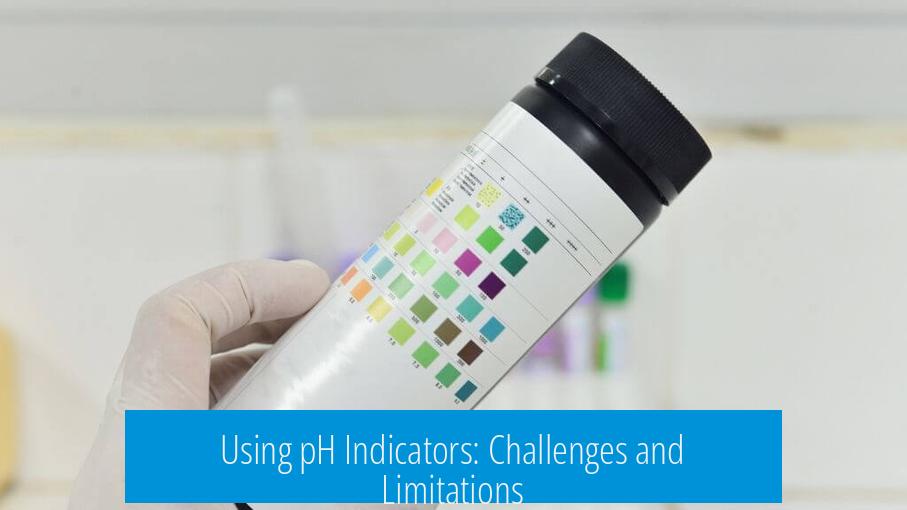
pH indicators are chemicals that change color based on the acidity or alkalinity of a solution. Common ones include bromophenol blue, phenolphthalein, and litmus. In theory, adding a pH indicator to water could cause a color change when urine is introduced if urine shifts pH sufficiently.
- Urine’s pH variability makes the indicator’s response unpredictable.
- Water with neutral pH may show little or no color change if urine pH is similar.
- Some indicators may not be safe for public or environmental exposure.
- These reactions do not confirm urine presence, only change in pH.
Thus, pH-based color effects are unreliable as a safe or definitive method to signal urine contamination or presence.
Thermochromic Dyes as a Practical Alternative
Thermochromic dyes alter color in response to temperature changes rather than chemical composition. This characteristic makes them suitable for detecting warm fluids like urine when added to cooler water.
Since human urine typically has a temperature around 37°C (98.6°F), it is notably warmer than typical toilet or tap water, which ranges 15–25°C (59–77°F). Applying a thermochromic dye with a transition temperature near this difference can produce a visible color change upon mixing.
- Working principle: Dye appears one color at low temperature; changes to another color when heated above a preset temperature threshold.
- Non-toxic and widely available: Many thermochromic pigments are developed for consumer products such as mood rings, children’s toys, and fabric prints.
- Robustness: They do not rely on urine chemistry and thus avoid variability problems.
This approach offers a safer, simple way to create a color effect responsive to temperature differences without involving chemical reactions with urine constituents.
Possible Thermochromic Application Methods

To utilize thermochromic dyes for a color change involving urine and water:
- Coat the water surface or container with a thermochromic film or paint tuned to switch color around 30–40°C.
- When warm urine enters the water, it locally heats the thermochromic layer, causing a distinct color shift visible to the observer.
- This method avoids direct chemical interaction with urine, improving safety and reducing contamination risk.
Additionally, these dyes come in various colors and transition ranges, enabling customization per need.
Safety and Hygiene Considerations
Combining chemicals with human waste demands caution. Any colorimetric system should:
- Use non-toxic, inert dyes or pigments.
- Avoid substances that degrade or release harmful compounds when exposed to urine.
- Minimize direct contact with urine to prevent hygiene concerns.
- Be easy to clean or replace if used in sanitary fixtures.
Thermochromic dyes largely fit these criteria. They are widely tested in products intended for skin contact or children’s use, indicating low toxicity and chemical stability.
Skepticism and Feasibility Issues
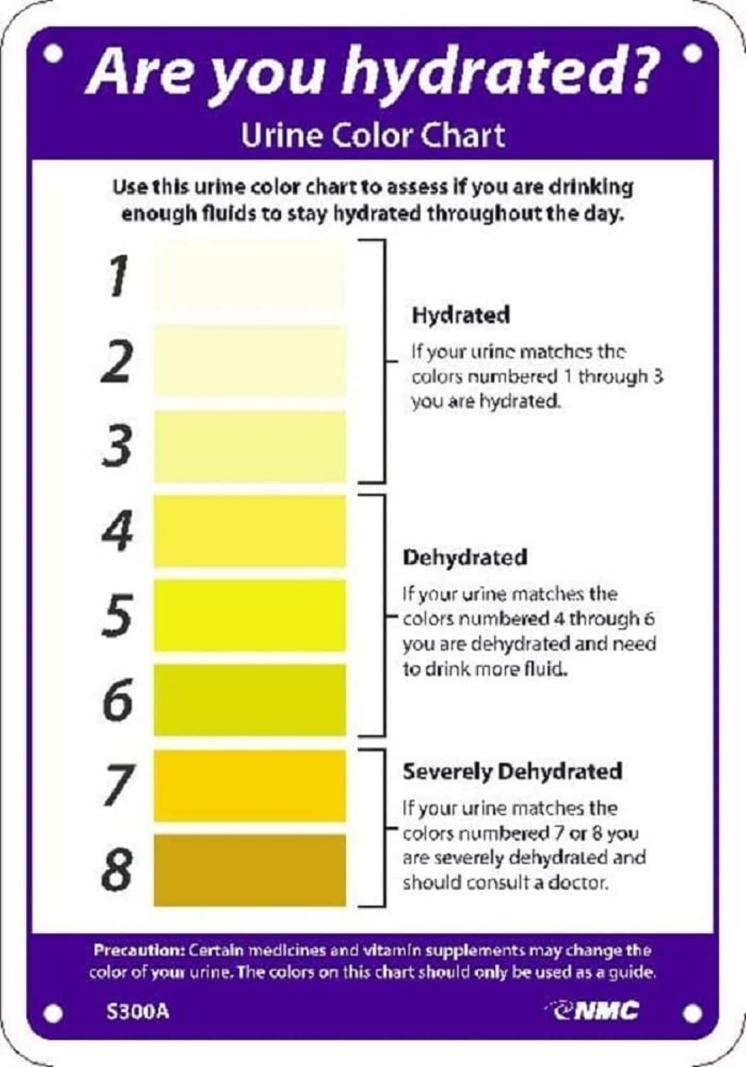
While thermochromic dyes are promising, the search for a reliable chemical indicator specific to urine remains skeptical for multiple reasons:
- Variability in urine composition and pH discourages development of a universal chemical reaction.
- Hygiene concerns discourage encouraging direct urine manipulation or contact.
- Some chemical reagents reacting with urine may pose toxicity or disposal issues.
- The specificity problem: differentiating urine from other fluids chemically is difficult.
These complexities limit the practical implementation of color-changing reactions based strictly on chemical interaction with urine and water.
Summary Table: Reaction Options for Urine and Water Color Effects
| Method | Principle | Pros | Cons |
|---|---|---|---|
| pH Indicators | Color change with pH variation | Simple, readily available | Unpredictable due to urine pH variability; safety concerns |
| Thermochromic Dyes | Color change with temperature | Non-toxic, predictable, no dependency on urine chemistry | Requires sufficient temperature difference; no chemical specificity |
| Specific Chemical Reaction with Urine Components | Color change via reaction with urea or other compounds | Potentially specific | No safe, reliable reagent widely available; safety/hygiene risks |
Key Takeaways
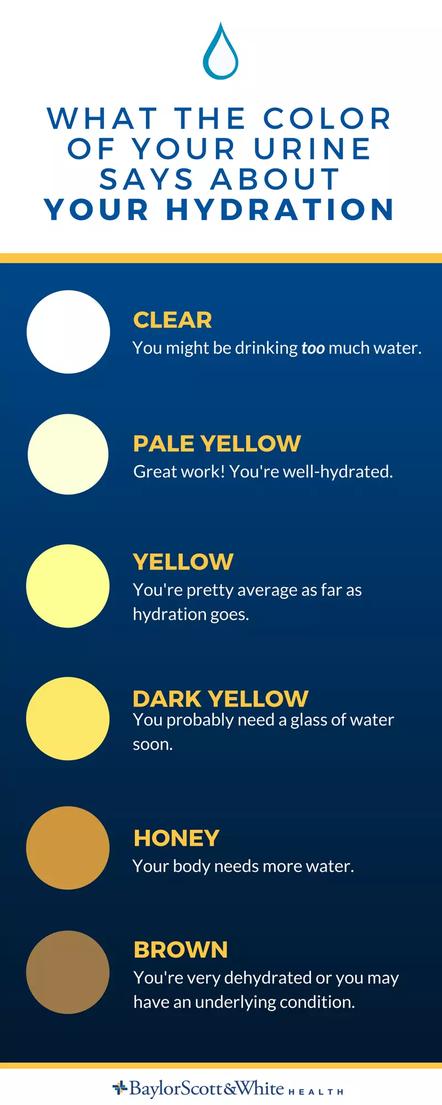
- Urine’s chemical variability makes pH-based color indicators unreliable for consistent color changes in water.
- Thermochromic dyes represent a safe, non-toxic solution leveraging temperature differences for visible color effects when warm urine contacts cooler water.
- Thermochromic approaches avoid chemical interaction risks and are widely available commercially.
- There is no widely accepted chemical reaction specific to urine that safely and predictably creates a color effect when mixed with water.
- Safety, hygiene, and practicality concerns currently limit the development of chemical color reactions involving urine.
Could You Make a Safe Reaction for Urine and Water That Creates a Color Effect Upon Reaction?
Short answer: It’s tricky to create a consistent, safe color reaction using urine and water, but thermochromic dyes offer the best shot at a safe, visible color change. Before you shrug this off as a strange science experiment with mostly “ew” factor, let’s unpack why it’s so complicated—and what you can realistically try.
Imagine a bathroom scene where urine hits water and suddenly—the water flashes a bright neon green or a mellow blue. Cool, right? But nature throws a curveball. Urine itself is a wily subject. Its chemistry changes daily, affected by diet, hydration levels, and even time of day. This makes relying on urine to trigger chemical reactions quite unpredictable.
Why Not Use pH Indicators?
Many people first consider pH indicators because urine tends to be around 7.4 pH, slightly basic but close to neutral.
Sounds perfect—add a pH indicator to water, urine hits it, color changes, magic happens. But hold your horses.
Urine pH varies a lot. Some days it’s acidic (below 7), other days more alkaline. This shift depends on what you eat, drink, and your body’s inner chemistry. So the color change you expect could be inconsistent or fail entirely.
For example, bromophenol blue is a common pH indicator that turns yellow in acid and blue in basic solutions. But with urine’s unpredictable pH range, the color might jump around or remain ambiguous. This makes pH indicators unreliable if your goal is a consistent color effect every time.
The Thermochromic Dye Twist—A Smarter Route
Now for a cool alternative: Thermochromic dyes. These dyes don’t care if the liquid is acidic, basic, or busy digesting your lunch. They change color depending on temperature.
Why does this matter? Because urine is warm—typically close to body temperature, around 98°F (37°C). Tap or toilet water is usually cold or room temperature. When the warmer urine hits water colored with thermochromic dye, the temperature spike triggers a color change.
Think of those color-changing T-shirts that shift hues when you sweat. The warmth does the trick, not the sweat’s chemistry.
- You can buy these dyes online or in craft stores; they’re safe (mostly non-toxic) and popular in children’s slime kits.
- They’re designed to shift colors around the high 70s to low 80s Fahrenheit—the perfect range for urine versus water.
- Best of all, since they respond to heat, they don’t rely on urine’s complex and variable chemistry.
Of course, any dye mixed into pee-experience items must be safe and hygienic. These thermochromic dyes have a good track record and very low risk of forming nasty compounds with urine.
Practical Concerns & Realistic Limitations
Before rushing out to make a glowing toilet bowl, consider these points.
- Is the color change for show, or do you want to detect actual urine presence? Thermochromic dyes show temperature changes, so they can’t confirm “this is urine.”
- Cleaning and hygiene matter. Adding dyes risks introducing chemicals people might not want flushed or exposed to skin.
- Will a colored liquid encourage unwanted touching or curiosity? Safety first.
- Much skepticism exists about developing a chemical reaction that’s both safe and specific for urine—it’s not as straightforward as it sounds.
For example, the idea of using a dye that reacts with urea (urine’s main component) sounds neat. But safety and hygiene make such chemicals less desirable. Also, common pool dyes that detect water contamination won’t necessarily work for urine detection.
Here’s a fun thought: Maybe someone should take up the challenge professionally. A chemist once volunteered their services to design a safe urine detector, hinting the problem is more complex than DIY science kits can solve.
So, What’s the Bottom Line?
Relying on a chemical that changes color because of urine’s composition is dicey. The pH varies, substances vary. It’s tough to engineer a tint that’s both safe and consistent.
Instead, thermochromic dyes offer a neat, safe workaround using temperature differences. It’s cleaner, more predictable, and less prone to chemical surprises.
But remember: This color change depends on warmth, not chemistry. It won’t tell you if it’s really urine—just if warm liquid smushed into cooler water.
Want to Experiment? Some Tips & Ideas
- Buy non-toxic thermochromic powder or paint, mix it with water, and watch what happens when pee (or any warm liquid) hits it.
- Try different color transitions—maybe cool blue to warm orange—to make the effect striking.
- Test with tap water of various temperatures to understand your dye’s response better.
- Steer clear of any chemicals that react chemically to urea unless you’re experienced in safe chemical handling.
Ultimately, a vivid, safe color-changing reaction for urine and water remains more of a creative challenge than a fully solved problem. If you’re looking for consistent, safe, and visually engaging results, thermochromic dyes are your friend.
And hey, if this sparks your curiosity, share your results! Science is best when it’s a little quirky and a lot fun.
Can a pH indicator reliably create a color change when urine mixes with water?
No, urine pH varies by diet and individual differences. This makes the color change from pH indicators unpredictable and inconsistent in such reactions.
Are thermochromic dyes a safe way to create a color effect when warm urine contacts cooler water?
Yes, thermochromic dyes change color with temperature. Since urine is warmer than water, these dyes offer a safer and more reliable color change option. They are mostly non-toxic and commercially available.
Is there a chemical that reacts specifically to urine to produce a color effect?
No widely accepted chemical reacts safely and reliably to urine to create a color effect. Safety and hygiene concerns complicate developing such specific indicators.
What practical concerns exist for making a urine-water color reaction system?
Concerns include safety, hygiene, inconsistent urine chemistry, and whether the system should detect wetness or identify urine specifically. These challenges limit practical applications.
Could pool dyes or known pH indicators work to show urine presence in water?
Some suggest dyes like bromophenol blue or pool dyes, but they mainly indicate pH or contamination rather than specifically detecting urine. They also face challenges in accuracy and safety.


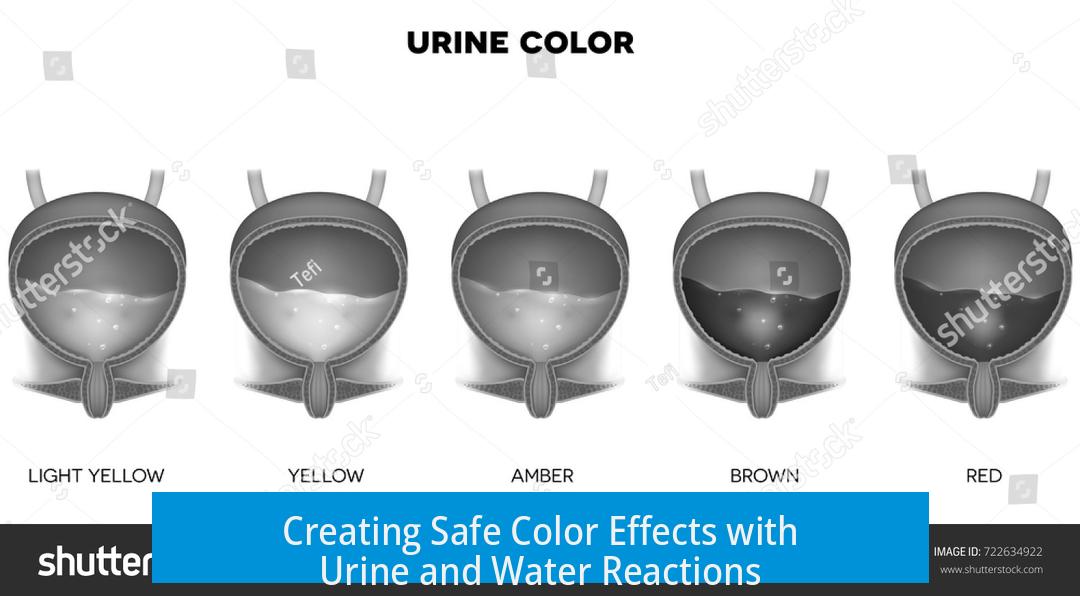


Leave a Comment